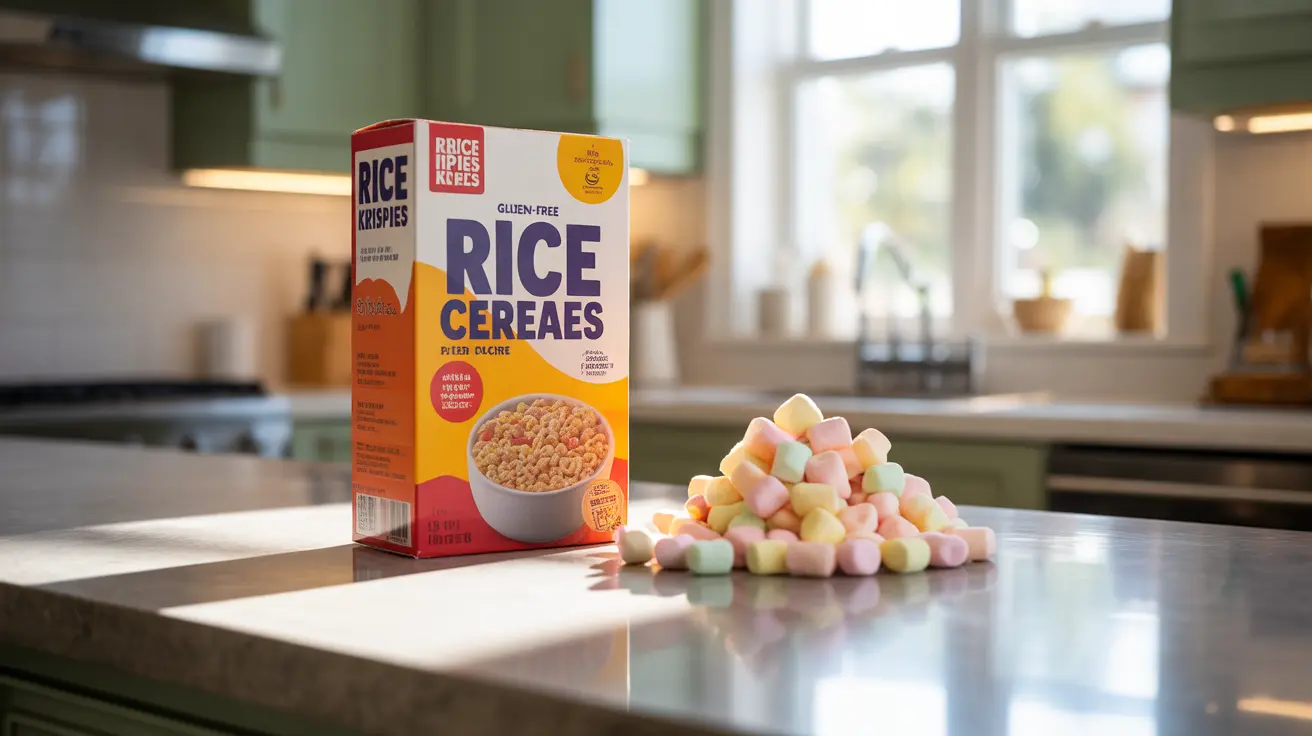For individuals with celiac disease or gluten sensitivity, knowing which cereals are safe to eat is crucial for maintaining their health. Rice Krispies, despite being made primarily from rice, raise important questions about gluten content that need careful consideration.
Understanding whether Rice Krispies contain gluten is essential for anyone following a gluten-free diet. Let's explore this topic in detail and discuss safe alternatives for those who need to avoid gluten.
Understanding Rice Krispies and Gluten Content
Traditional Kellogg's Rice Krispies are not gluten-free, despite being made primarily from rice. The cereal contains malt flavoring derived from barley, which is a source of gluten. This ingredient gives the cereal its characteristic taste but makes it unsuitable for people who need to avoid gluten.
Additionally, even though rice is naturally gluten-free, cross-contamination during manufacturing can occur if the facility also processes wheat, barley, or rye products.
Health Implications for Gluten-Sensitive Individuals
Consuming products containing gluten when you have celiac disease or gluten sensitivity can lead to serious health consequences. Symptoms may include:
- Digestive discomfort
- Bloating and gas
- Fatigue
- Headaches
- Skin problems
- Joint pain
For those with celiac disease, even trace amounts of gluten can trigger an autoimmune response that damages the small intestine.
Gluten-Free Alternatives to Rice Krispies
Several certified gluten-free alternatives to traditional Rice Krispies are available in the market:
- One Degree Organic Foods Rice Crisps
- Nature's Path Crispy Rice Cereal
- Barbara's Brown Rice Crisps
- Store brand certified gluten-free rice cereals
These alternatives are specifically produced in dedicated gluten-free facilities to prevent cross-contamination.
Making Gluten-Free Rice Krispies Treats
You can still enjoy homemade Rice Krispies treats by using gluten-free alternatives. Here's what you need:
- Certified gluten-free crispy rice cereal
- Gluten-free marshmallows
- Butter (naturally gluten-free)
Always check that all ingredients, including marshmallows, are certified gluten-free, as some brands may contain hidden sources of gluten.
Reading Labels: What to Look For
When searching for gluten-free cereals, be vigilant about these ingredients:
- Malt flavoring or extract
- Modified food starch (unless specified as gluten-free)
- Natural flavors (unless certified gluten-free)
- Wheat derivatives
- Barley-based ingredients
Frequently Asked Questions
1. Do Rice Krispies contain gluten, and why might they not be suitable for those with gluten intolerance?
Traditional Rice Krispies contain malt flavoring from barley, making them unsuitable for those with gluten intolerance. The presence of this ingredient means they are not gluten-free.
2. What are the risks of consuming gluten for individuals with celiac disease or non-celiac gluten sensitivity?
For individuals with celiac disease, gluten consumption can damage the small intestine and trigger an autoimmune response. Those with non-celiac gluten sensitivity may experience various symptoms including digestive issues, fatigue, and inflammation.
3. How can I make gluten-free Rice Krispies treats at home using safe ingredients?
Use certified gluten-free crispy rice cereal, gluten-free marshmallows, and butter. Ensure all ingredients are certified gluten-free and prepare in a clean workspace to avoid cross-contamination.
4. Are there any certified gluten-free alternatives to Kellogg's Rice Krispies available in grocery stores?
Yes, several brands offer certified gluten-free alternatives, including One Degree Organic Foods, Nature's Path, and Barbara's. These products are specifically manufactured in dedicated gluten-free facilities.
5. What ingredients should I avoid when looking for gluten-free cereals similar to Rice Krispies?
Avoid cereals containing malt flavoring, modified food starch (unless specified as gluten-free), wheat derivatives, and barley-based ingredients. Always look for a certified gluten-free label.




